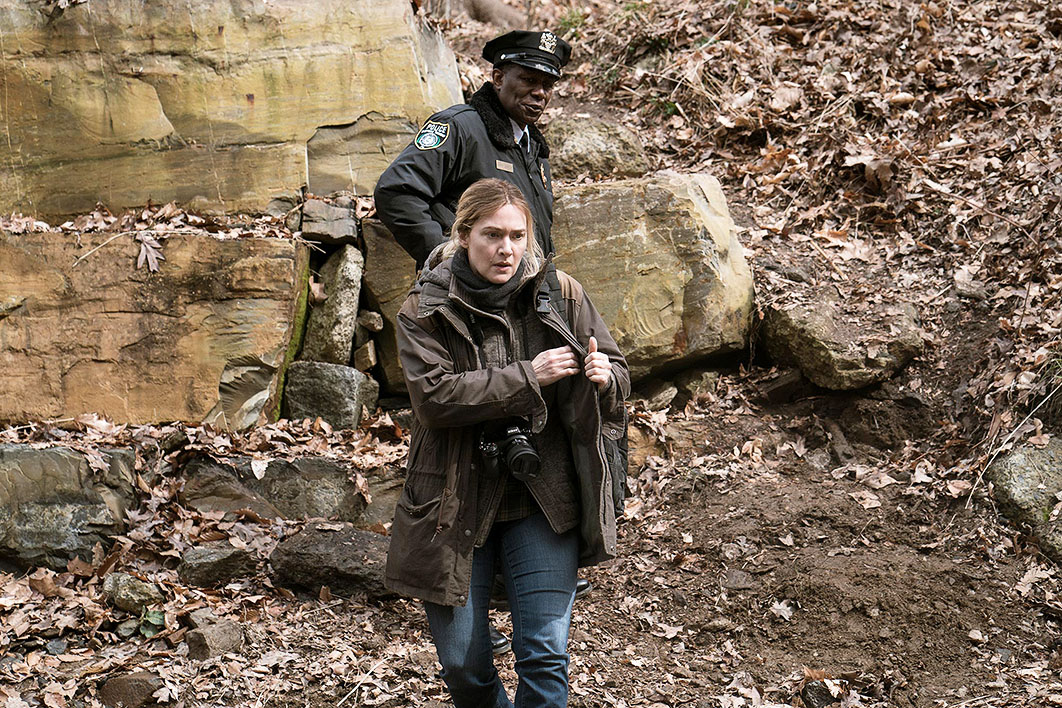As crime continues to dominate the repertoire of television drama, new subgenres evolve. We have the arctic supernaturalism of Fortitude and The Terror, the documentary social realism of Unbelievable and The Investigation and the recent burgeoning of Belle Époque noir, in which finely costumed detectives chase sadistic killers through the underworlds of elegant European cities.
The landmark British series Broadchurch, all three seasons of which are available on the SBS “Best of the Brits” menu, established a new strain with its exploration of the complex dynamics of extended families in scenic locations. Crime takes on the qualities of tragedy as local residents are drawn into an increasingly sinister sequence of events.
David Tennant, who took a lead role in Broadchurch, heads the cast of a new miniseries with similar generic elements. Deadwater Fell (SBS On Demand), also featured among the Best of the Brits, is set in a historic village surrounded by hill country west of Glasgow. With its winding lanes running down towards the coast, this might be the setting for a northern version of Doc Martin: surely a broken leg or undiagnosed diabetes is the worst that can happen? But the title sequence, intercutting images of the spring-green landscape with shots of a forensic team combing through a burnt-out house, warns of something more.
Episode one opens by establishing a buoyant mood. A primary school painting class is interrupted when parents arrive to shepherd the children into the street to cheer on village contestants in a cycle race. Celebrations continue into the evening, with a barn dance to the accompaniment of a cèilidh band; then family groups talk quietly as they walk home through the narrow streets, small children hoisted on the shoulders of parents.
The fire comes later that night. Desperate attempts are made to rescue the wife and children of the local doctor, but a shift to slow motion when emergency vehicles arrive signals they are too late to prevent the worst. It all looks like a horrible accident, one of those local tragedies that is remembered across generations.
Tennant plays the bereaved father who becomes the prime suspect. The actor’s prehistory intensifies the ambiguities of his performance, which at times evokes the dour but sternly principled Broadchurch detective, but also, under pressure, recalls the dead eyes and febrile energy of his role as serial killer Dennis Nilsen in last year’s Des.
As the story closes in around its central character, Western Scotland’s great outdoors is left on hold and viewers are drawn into scenes that belong more to the claustrophobic world of the American series Mindhunter. We seem to be back in the generic mainstream of the crime thriller, where the story is not, after all, about spirit of place but only about who among the dramatis personae is the real bad seed.
One of the challenges of this subgenre is finding an effective balance between scenography and the interiority of a psychological crime story embedded in confined networks of family and community. Stories might be born of places, but it takes deep imaginative commitment to create a strong dramatic weave of places, people and events. And while a stunning location is a lure in itself, some series are over-dependent on cinematography to provide atmosphere and expansive vision to a less-then-compelling narrative.
In Smother (ABC iView), set in the wild Burren region of Ireland’s County Clare, Dervla Kirwan plays the matriarch in a household ridden with secrets, lies and betrayals. Again, suspicions grow around what appears to be a fatal accident in a narrative that offers a blend of crime thriller and family tragedy.
When families break and reform in an isolated community, faultlines run through children’s lives. Parenting under stress can become toxic, and resurgent crises are inevitable. But interpersonal crises, however explosive, are not always the most effective ingredients for dramatic tension. As Smother progresses, one emotionally overblown scene follows another.
Writer Kate O’Riordan is known for her commitment to local authenticity, but in this series the stunning coastal landscapes come to seem oddly disconnected from the domestic psychodrama. Perhaps television producers should be more wary of assuming that location, location, location is a winning formula.
Or perhaps it is more a matter of whether and how location is integral to the drama. The new HBO series Mare of Easttown (Foxtel and Binge) is deservedly winning plaudits, both for Kate Winslet’s performance in the title role and for its unflagging realism. Here, there is no disparity between spirit of place and the brutality of events.
At the start of episode one, the camera pans across a graveyard in the cold light of dawn and then travels along one of the town’s streets. A light goes on in an upstairs window and the scene cuts to the interior, where local detective Mare Sheehan is woken by a call. This seamless transition signals that here interiors are as important to the visual narrative as the scenery outside.
Cinematographer Ben Richardson admits to having been concerned about scope and scale in the small-town setting. He collaborated with production designer Keith Cunningham to prepare a range of real locations to “make it all about the nuance and the detail and the scope of these homes, these little spaces.” At first glance, the enclosed spaces are unprepossessing: cluttered surfaces, dated wallpaper, worn furniture. Lace curtains suppress the daylight. Key encounters take place in kitchens, bedrooms and bathrooms, a pet shop, the pub, the local basketball club and, of course, the police station.
Easttown is a battlers’ neighbourhood. People stay there because they can’t afford to move and because they are bound by family ties. As in any community defined by the co-dependencies of economic constraint, the young are frustrated. They take drugs, get into fights, and have casual sexual encounters with long-term consequences.
Because so many children are born to parents too young to care for them, three-generation and even four-generation households are common. Mare lives with her mother, a daughter and the four-year-old child of a son who committed suicide. Mare herself — hard-bitten, short-tempered and driven — is the most difficult personality in the family, though her mother (Jean Smart) comes a close second.
They spar and jibe incessantly, but there’s as much humour as rancour in their exchanges. Sitting in the kitchen drinking beer and eating cheetohs from the pack, foot hoisted on the table with a bag of frozen food applied to a recently sprained ankle, Mare seems to derive perverse relaxation from the battle of wits. For all their mutual provocations, these two women are on the same wavelength, and the bonds between them prove strong in a crisis.
Mare’s loss of her son, it transpires, is a case of the past repeating itself: her father committed suicide when she was thirteen. She is numbed by tragedy, yet there’s enough fire in her to fuel a fierce devotion to the surrogate parenting of her grandson and the police work that defends the neighbourhood.
Here, crime is always someone’s tragedy. Grief spreads through families as they are inevitably drawn into the events Mare must investigate. For all her self-effacing toughness, it’s clear she feels the pain at every turn, and is prone to break police rules when she sees a way of staving off potential disaster. The pressure of seeing what’s coming before anyone else is part of the burden, and an effective suspense device for the series.
Winslet embodies this character with a stolid, foursquare presence that is riveting in every scene, so much so that it’s easy to overlook other performances in the extensive cast. Veteran Jean Smart holds her own, and there is some especially effective rapport with Guy Pearce, Winslet’s co-star in Mildred Pierce, who plays a visiting teacher of creative writing. With that specialisation, he’s so obviously out of place in Easttown that you have to wonder what he’s really up to. But this is a story that constantly prompts second-guessing, which is an essential part of its appeal. •




